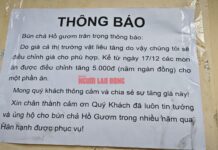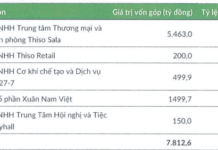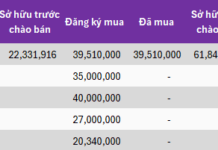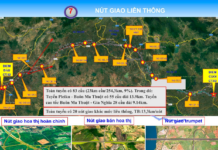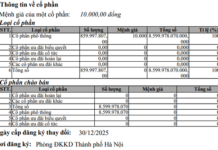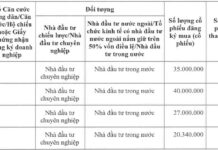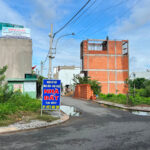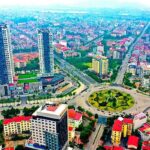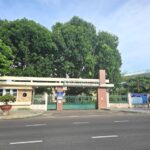The storm has caused significant damage and loss of life in several provinces. Specifically, the death toll stands at 33 in Cao Bang (including 17 deaths and 16 missing), 30 in Lao Cai (19 deaths and 11 missing), and nine in Yen Bai due to landslides (seven deaths and two missing). The storm has also claimed lives in Quang Ninh (eight deaths due to the storm and one due to flooding), Hai Phong (two storm-related deaths), and one each in Hai Duong, Hanoi, and Hoa Binh. There are also two missing persons reported in Tuyen Quang and one each in Bac Giang and Lai Chau, with 752 people injured.
AGRICULTURAL DAMAGE: 84,000 HECTARES OF RICE, COLOUR CROPS, AND FRUIT TREES AFFECTED
On the maritime front, 85 vessels of various types sank at their moorings in Quang Ninh.
In terms of agriculture, 48,632 hectares of rice have been flooded and damaged, with the most significant impacts in Hai Phong (25,780 ha), Thai Binh (11,000 ha), Hanoi (15,563 ha), Hung Yen (12,119 ha), Hai Duong (18,500 ha), Ha Nam (7,928 ha), Lang Son (4,495 ha), Bac Giang (14,933 ha), Bac Ninh (9,830 ha), Vinh Phuc (8,860 ha), Thai Nguyen (3,512 ha), and Yen Bai (2,618 ha)…
Additionally, 26,186 hectares of horticultural crops have been flooded and damaged, including areas in Hai Phong (2,614 ha), Nam Dinh (509 ha), Thai Binh (3,345 ha), Hanoi (1,205 ha), Bac Ninh (2,321 ha), Hai Duong (3,000 ha), Hoa Binh (5,914 ha), and Lang Son (1,393 ha)… The storm has also affected 11,038 hectares of fruit trees in Hai Phong (2,550 ha), Thai Binh (1,385 ha), Hung Yen (1,841 ha), Hai Duong (3,000 ha), and other provinces…
In terms of aquaculture and livestock, 1,577 fish cages and farms were damaged or swept away (including 1,000 in Quang Ninh alone). The storm also resulted in the loss of 1,111 cattle and 680,243 poultry, mainly in Hai Duong (320,000) and Hai Phong (345,610 poultry).
The prolonged duration of the storm and the intense wind speeds and gusts caused significant damage to infrastructure. A total of 48,337 houses were damaged, with the most significant impacts in Quang Ninh (20,245), Hai Phong (13,927), Bac Ninh (3,450), Lang Son (2,929), and other provinces. Many shops, offices, and schools lost their roofs, and advertising billboards, telecommunication poles, and mobile transmission stations were toppled. Urban trees were uprooted and blocked roads in Quang Ninh, Hai Phong, Hai Duong, and Hanoi…
Ministry of Agriculture and Rural Development
According to the Ministry of Agriculture and Rural Development, the aftermath of Storm No. 3 affected a vast area of the northern region, from Thanh Hoa to all 26 provinces in the region, with extremely heavy rainfall ranging from 200 to 400 mm between September 7 and 10. Some areas, such as Lao Cai, Yen Bai, and Thai Nguyen, received 400 to 600 mm of rain, with Nậm Xây Luông in Lao Cai recording 760 mm, Pú Dảnh in Son La recording 625 mm, Tân Phượng in Yen Bai recording 632 mm, Yên Đổ in Thai Nguyen recording 588 mm, Nấm Dẩn in Ha Giang recording 672 mm, and Tĩnh Túc in Cao Bang recording 461 mm…

The heavy rainfall triggered floods, flash floods, and landslides, with the most severe impacts in Cao Bang (Nguyen Binh), Lao Cai (Bat Xat, Sa Pa, Si Ma Cai, and Bac Ha), Hoa Binh (Da Bac), Yen Bai (Van Chan and Luc Yen), Tuyen Quang, Lang Son, Thai Nguyen, and Ha Giang… The storm caused river levels to exceed warning levels, with the upper reaches of the Luc Nam River (Bac Giang), Thao River (Lao Cai and Yen Bai), Thuong River (Lang Son), Gam River (Tuyen Quang), and other rivers experiencing dangerous water levels. The Thao River in Lao Cai and Yen Bai even surpassed the historic flood levels of 1971, leading to severe flooding in multiple provinces, including Lao Cai, Yen Bai, Thai Nguyen, Bac Giang, and Tuyen Quang…
CONTINUED IMPLEMENTATION OF STRICT MEASURES TO PREVENT DISASTERS
Currently, Storm No. 3 has weakened into a tropical depression and is dissipating in the northwestern region. However, its aftermath will continue to bring heavy rainfall until September 11 in the northern provinces, especially in the northwestern region.
Forecasts predict that on September 10, the mountainous and midland areas of the North will experience rainfall ranging from 40 to 80 mm, with some areas receiving over 150 mm. Lao Cai and Yen Bai are expected to receive 50 to 120 mm of rain, with isolated areas receiving over 250 mm. On September 11, rainfall is expected to range from 30 to 60 mm, with isolated areas receiving over 120 mm. In the North Delta, Hoa Binh, Thanh Hoa, and Nghe An, heavy rainfall is expected on September 10, with amounts ranging from 50 to 120 mm and isolated areas receiving over 300 mm. On September 11, rainfall is forecast to range from 40 to 90 mm, with isolated areas receiving over 200 mm.
To stabilize the lives of the people and restore production, as well as to respond to the heavy rainfall after the storm, the Ministry of Agriculture and Rural Development proposes that the localities continue to strictly implement the urgent directive of the Prime Minister. For the delta and coastal areas, focus on searching for missing persons at the Phong Chau bridge incident in Phu Tho province and those missing due to floods, flash floods, and landslides in Cao Bang, Lao Cai, and other provinces. Implement measures to ensure the safety of dykes and the safety of the Red River and Thai Binh River systems.
Localities need to concentrate resources on overcoming the consequences of the storm; ensure the provision and support of food, water, and other essentials, absolutely not letting people go hungry or cold; mobilize forces to assist people in repairing houses, cleaning the environment, and preventing epidemics. Prioritize resources to repair schools and hospitals and support the cleaning and sanitation of schools to ensure the return of students to classes. Conduct environmental sanitation to prevent post-storm epidemics.
Focus on operating pumping stations and irrigation works to drain flooded rice and horticultural crops; prepare ready-to-use seed sources for production recovery after the storm. Focus on draining urban areas, industrial parks, and low-lying areas.
For the northern mountainous region, focus on evacuating people from areas with deep flooding and a high risk of flash floods and landslides. Organize forces to guard and control traffic at underwater, flooded, and landslide-prone areas; do not allow people and vehicles to pass if safety cannot be guaranteed. Prepare forces, materials, and vehicles to overcome traffic interruption situations. Inspect and be ready to ensure the safety of reservoirs and downstream areas, especially small hydropower reservoirs and critical reservoirs that are already full; arrange forces to be on duty to operate and regulate and handle incidents. Strengthen information and communication so that people can proactively grasp and respond to prevent and minimize damage.
According to the National Center for Hydro-Meteorological Forecasting, as of September 10, 2024, the flood level on the Thao River in Lao Cai City is slowly receding, while in Yen Bai, it is rising. The Lo River (Tuyen Quang and Phu Tho), Cau River (Thai Nguyen and Bac Ninh), Thuong River (Bac Giang), Thai Binh River (Hai Duong), Red River (Hanoi), and Hoang Long River (Ninh Binh) are all experiencing rising water levels, while the Luc Nam River (Bac Giang) is slowly receding. Water levels as of September 10: On the Thao River in Yen Bai, the level is at 35.32m, 3.32m above the third alert level and 1.1m above the historic flood level of 1968 (34.42m). On the Cau River at Dap Cau, the level is at 6.12m, 0.18m below the third alert level. On the Thuong River at Phu Lang Thuong, the level is at 6.65m, 0.35m above the third alert level. On the Luc Nam River at Luc Nam, the level is at 6.53m, 0.23m above the third alert level. On the Lo River in Tuyen Quang, the level is at 26.02m, just 0.02m below the third alert level…
The Western District of Ho Chi Minh City: A Rising Star with Triple Allure
Long An’s real estate market is experiencing a significant boost thanks to its increasingly well-connected infrastructure and pristine natural environment. The province’s trend towards developing an eco-industrial urban blend is a huge draw, offering a unique and appealing lifestyle choice for prospective buyers and investors.
The Luxe Life: Unveiling the Ultimate Real Estate Destination in Bac Ninh for the Discerning Investor
The luxury real estate market in Bac Ninh is emerging as an ideal destination for investors, with a unique combination of attractive features. Offering not just affordable pricing and transparent legal processes, but also a proven track record of sustainable profitability, this market presents a compelling opportunity.




